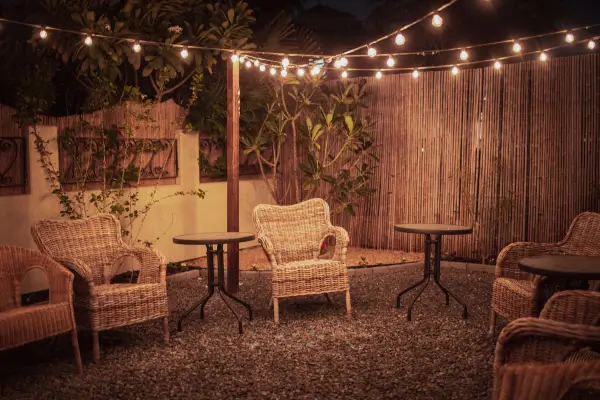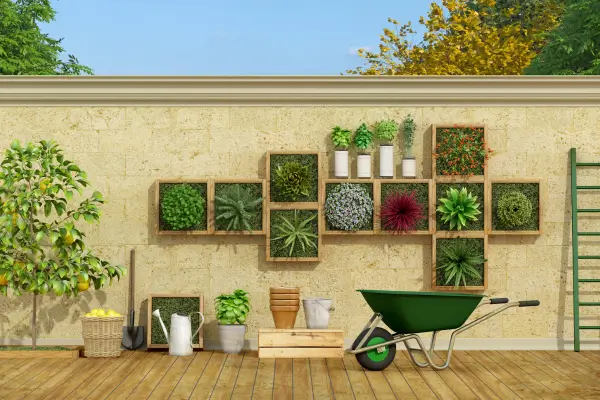DIY composting bins are an easy and sustainable way to reduce waste and enrich your garden. They transform organic scraps into nutrient-rich soil while promoting eco-friendly living.
From small indoor bins to large outdoor setups, composting fits any space or lifestyle. With simple materials, you can build a bin that suits your needs and supports the planet.
Start composting today and create a circular ecosystem in your own home. Let’s explore how to make your own compost bin step by step.
Turn waste into wealth and embrace sustainability effortlessly!
Why Compost?
Composting has multiple environmental and practical benefits, including:
- Reduces Waste: Diverts organic materials from landfills, minimizing methane emissions.
- Enriches Soil: Provides essential nutrients to plants and improves soil structure.
- Saves Money: Reduces the need for chemical fertilizers and enhances plant growth naturally.
- Encourages Sustainability: Helps create a circular ecosystem by returning organic matter to the earth.
- Improves Water Retention: Compost enhances soil structure, allowing it to retain more water, reducing the need for frequent irrigation.
Choosing the Right Compost Bin
Before building your compost bin, it’s important to select the right type based on your available space and composting needs.
1. Plastic Storage Bin Composting (Ideal for Small Spaces)
A great option for those living in apartments or homes with limited outdoor space. Plastic bins are easy to manage and require little maintenance.
2. Wooden Pallet Compost Bin (Best for Large Yards)
This open-air composting method is best suited for people with gardens who need a large composting capacity. The airflow provided by the wooden slats speeds up decomposition.
3. Bokashi Bin (Perfect for Indoor Use)
A Japanese composting method that ferments organic waste using beneficial microbes, ideal for indoor spaces. This method produces pre-compost that can be buried in the soil to enrich it.
4. Rotating Compost Tumbler (Great for Faster Composting)
A sealed bin that makes it easier to turn compost, speeding up decomposition. It is particularly useful for those who want to produce compost quickly without much effort.
Step-by-Step: How to Make a Simple Compost Bin
Materials Needed:
- A large plastic storage bin with a lid (minimum 18 gallons)
- Drill with a ¼-inch drill bit
- Small bricks or wooden blocks (to elevate the bin)
- Organic waste (vegetable scraps, fruit peels, coffee grounds, eggshells)
- Dry materials (leaves, shredded newspaper, cardboard)
- Spray bottle with water (for moisture control)
Step 1: Prepare the Bin
- Drill small holes on the sides, lid, and bottom of the bin to allow airflow and drainage.
- Place small bricks or wooden blocks underneath the bin to improve ventilation.
- Choose a shaded but well-ventilated location to place your bin.
Step 2: Layer the Compost
- Start with a layer of dry materials such as leaves, straw, or shredded newspaper to absorb moisture.
- Add kitchen scraps like fruit and vegetable peels, coffee grounds, and eggshells.
- Alternate layers of dry and wet materials to maintain a balanced composting process.
- Maintain a carbon-to-nitrogen ratio of approximately 30:1 for effective decomposition. (Dry materials = carbon, Wet materials = nitrogen.)
Step 3: Maintain the Compost
- Stir the compost every few days to aerate it and speed up decomposition.
- Keep the compost moist but not soggy—sprinkle water if it gets too dry.
- Avoid adding dairy, meat, oily foods, or pet waste to prevent unpleasant odors.
- If the compost smells bad, add more dry materials to balance excess moisture.
- If the composting process slows down, turn the contents more frequently to add oxygen.
Step 4: Harvest and Use the Compost
- After 2-3 months, the compost should have a dark, crumbly texture with an earthy smell.
- Use the finished compost in your garden, potted plants, or vegetable beds to enrich the soil.
- Sift the compost to remove large, undecomposed items before use.
- Store extra compost in a dry, aerated bin for later use.
Common Composting Mistakes to Avoid
- Adding Too Much Wet Waste: Overloading the bin with food scraps without balancing with dry materials can cause odors.
- Not Enough Airflow: Compost needs oxygen to break down efficiently; turn it regularly.
- Ignoring the Moisture Level: Too much water creates sludge, while too little slows decomposition.
- Composting the Wrong Materials: Avoid composting citrus peels, onions, and chemically treated wood, as they can disrupt the process.
- Placing the Bin in a Poor Location: Too much sunlight can dry out compost, while too much shade can slow decomposition.
Additional Tips for Faster Composting
- Chop food scraps into smaller pieces to speed up decomposition.
- Add red worms (vermicomposting) to break down organic matter more efficiently.
- Cover compost with a breathable cloth to prevent pests while allowing airflow.
- Use a compost activator like garden soil or manure to introduce beneficial bacteria.
Final Thoughts
Making your own compost bin is a simple and effective way to reduce household waste while creating a natural fertilizer for your garden. Whether you have a backyard, balcony, or indoor space, there’s a composting method that fits your lifestyle.
With patience and proper maintenance, you can create nutrient-rich compost that helps your plants thrive. Start composting today and contribute to a more sustainable environment!



